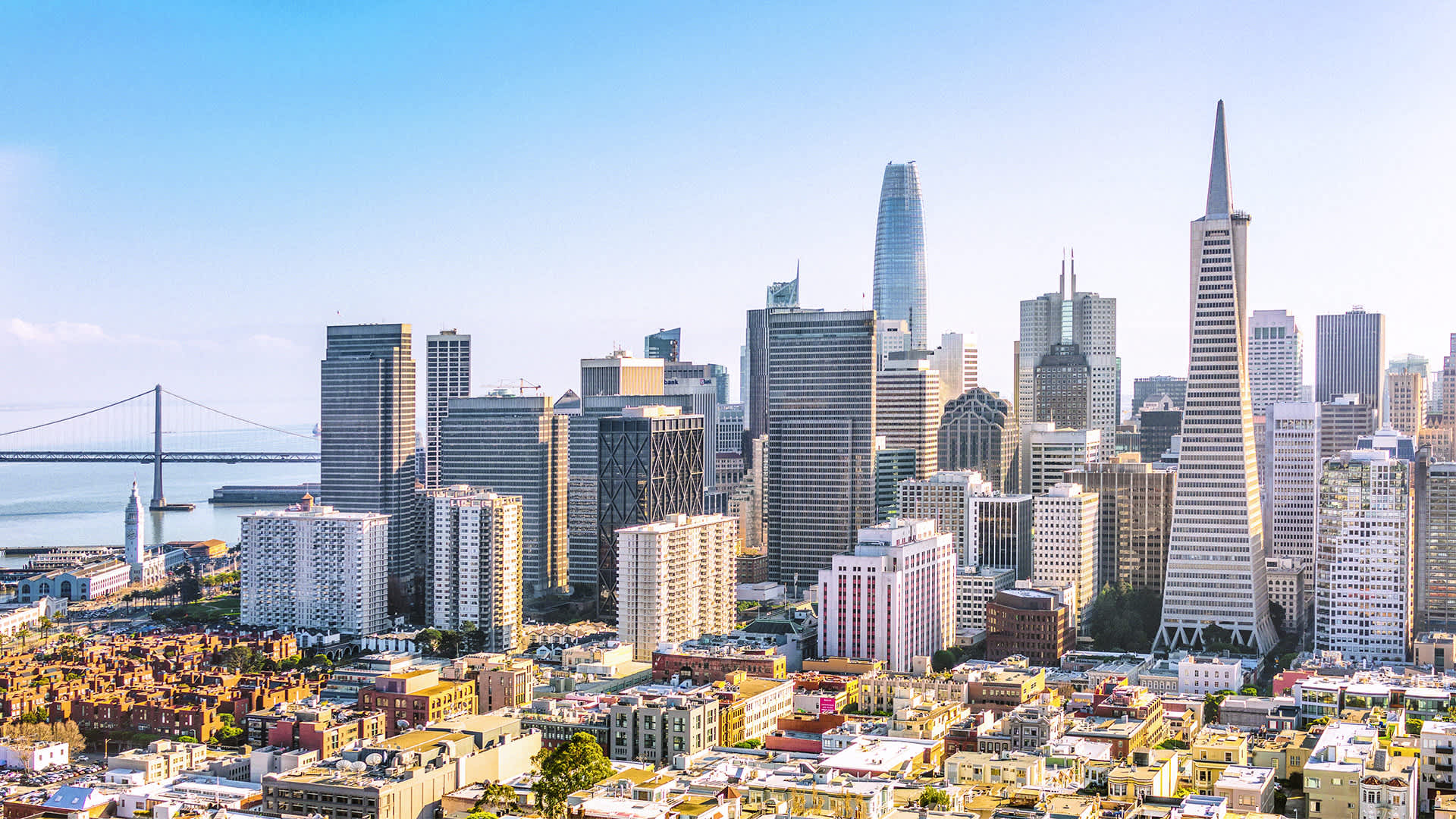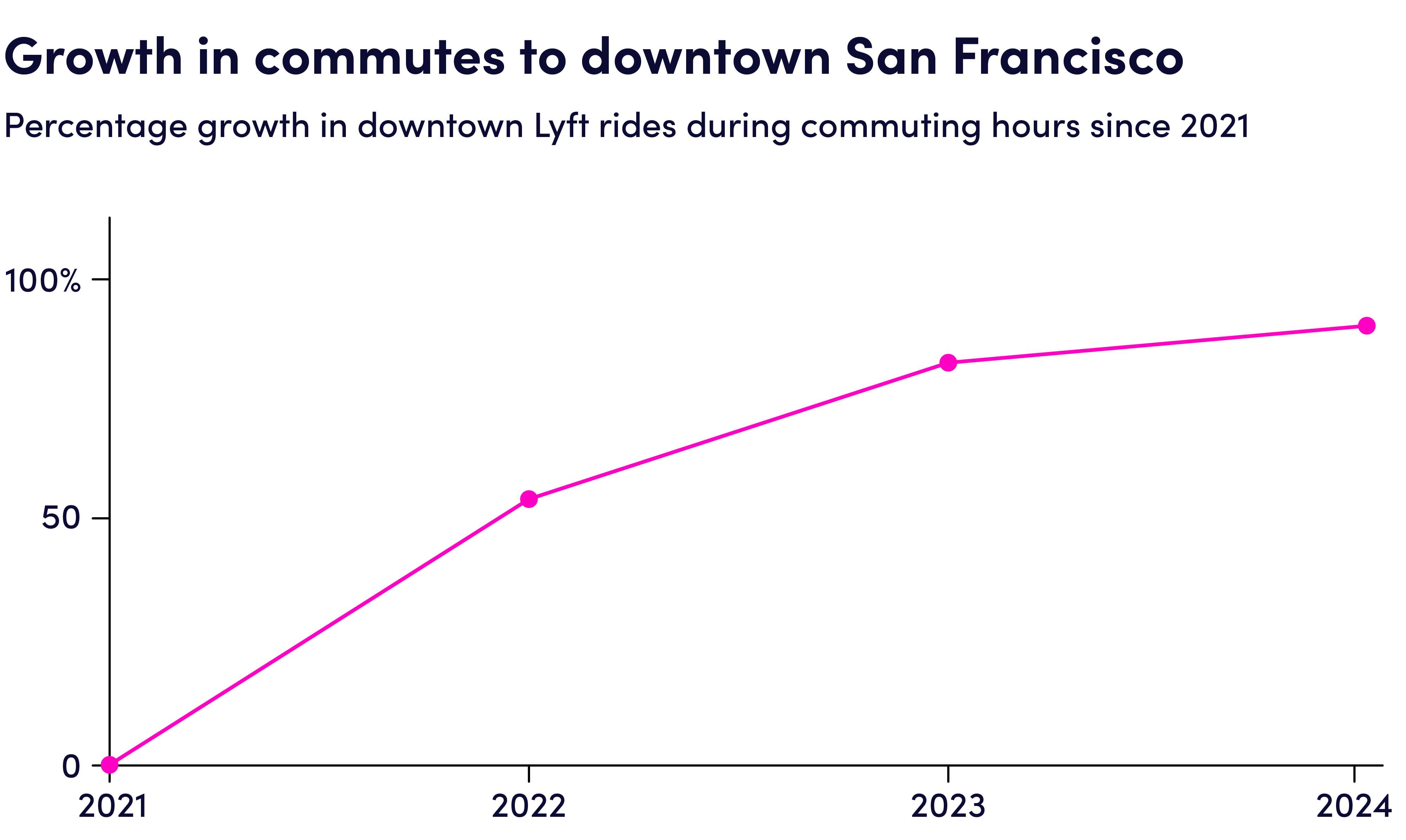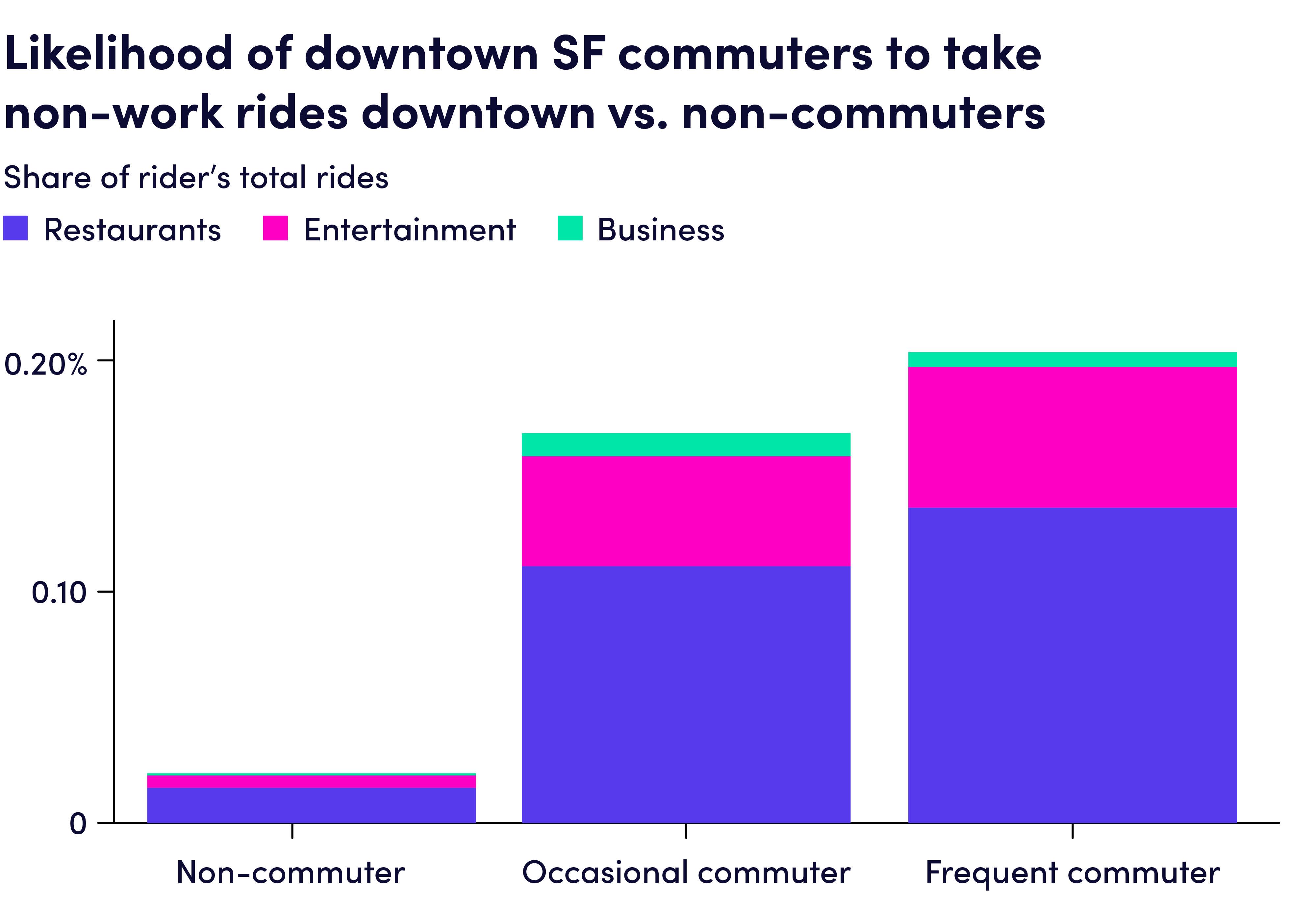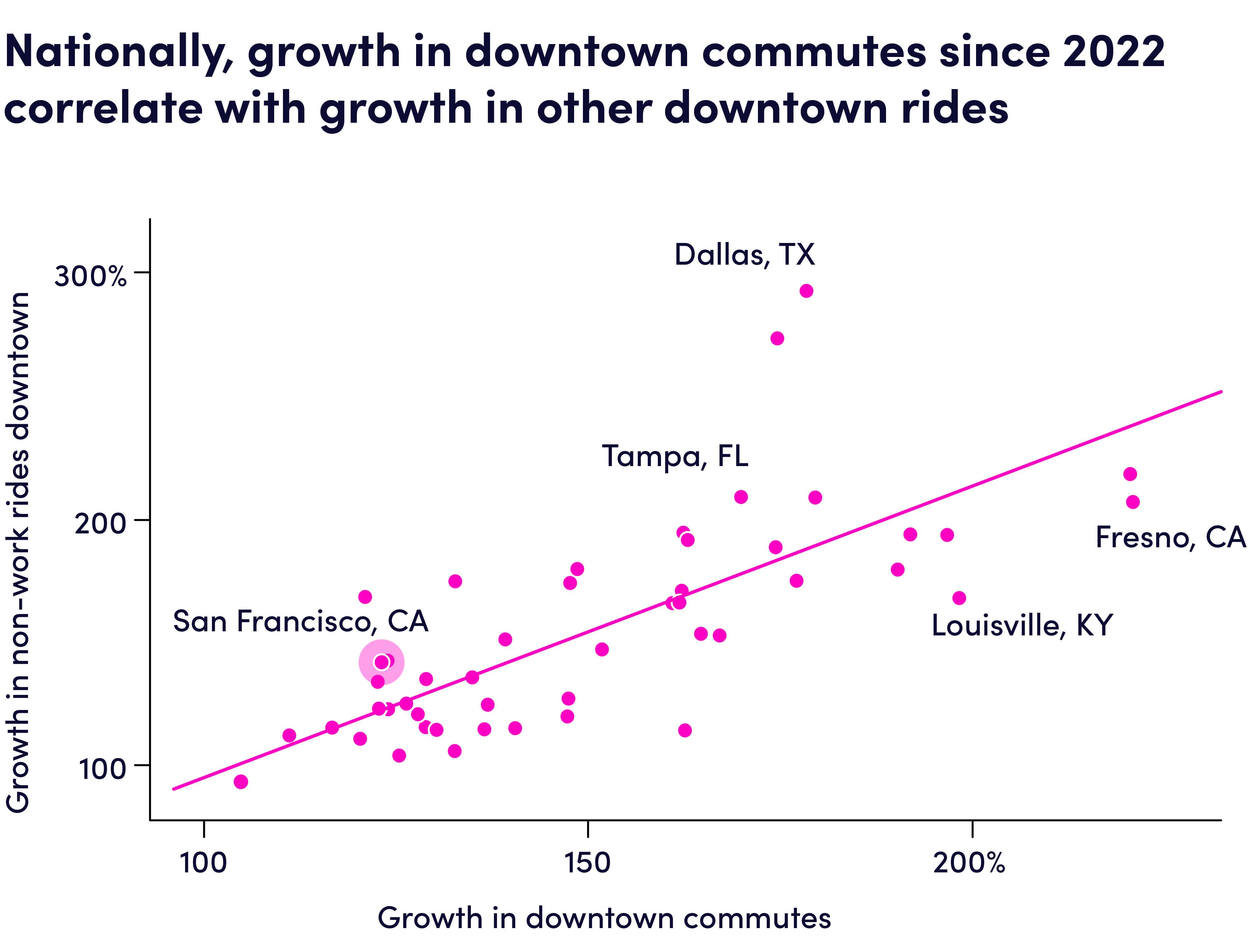
You don’t have to live in San Francisco to be aware of its challenges. Ever since the pandemic, and despite major investment from City Hall, downtown San Francisco has been bedeviled by soaring office and retail vacancies. But last month, Lyft made a major commitment to its hometown, completing a long-term renewal of its lease along Mission Bay.
“There’s no Lyft without San Francisco,” CEO David Risher says. “We’re proud of Lyft’s history of connecting San Franciscans to the best their city has to offer, and we’re here to stay.”
“The businesses, and the people they serve, are the beating hearts of our downtowns,” said assemblymember Matt Haney, chair of the Select Committee on Downtown Recovery. “And recovery is only successful when everybody commits to creating a vibrant environment. Downtown San Francisco is well positioned for the future, thanks to our hometown companies that are choosing to plant their feet here.”
Lyft data confirms downtown San Francisco’s challenges but also reason for optimism — and encouraging signs that Lyft itself will play a meaningful role in downtown’s revitalization.
Signs of a rebound
Over the last couple of years, many cities have seen rides to and from their downtowns approach and even surpass 2019 levels. San Francisco is not yet among them. According to Lyft data, the volume of commute-time rides to and from the downtown area in 2024 was just 35% of the volume in 2019.
But, as more San Francisco–based tech companies — including Lyft — encourage workers to return to the office, there are signs that workplace activity is beginning to return to downtown. Since 2021, the growth in downtown Lyft rides during commute hours has increased every year — a nearly 50% jump from 2021 to 2022, and another 23% since then. That still lags behind most other downtowns and is lower than growth in the rest of the city, but it is a sign that momentum could be picking up. (Some real estate analysts have noticed similar trends, seeing the beginning of a potential office-market recovery.)

So far, those commutes look a little different than they did before Covid. Lyft commuters are coming to downtown from farther away — the average commute-time ride is 4.4 miles, up from 3.2 miles in 2019. They also commute a little less frequently, perhaps a function of the increased popularity of hybrid work schedules.
Lyft riders aren’t just taking car rides downtown, they are also pedaling. Lyft-owned bikeshare service Bay Wheels saw a 31% increase in activity — resulting in a record year for the service — with work-adjacent stations in SOMA and along the Embarcadero among the most popular. That popularity was encouraged by a 2023 partnership between Lyft and the Bay Area Metropolitan Transportation Commission that invested $16 million to modernize Bay Wheels, adding ebikes and charging stations and reducing the cost of an annual membership and ebike fees.
More commuting means more activity
And those riders didn’t just scurry home after a long day at the office. Regular downtown Lyft commuters were nine times more likely than non-commuters to go downtown for food, shopping, or entertainment. Even occasional commuters were six times more likely than non-commuters to go downtown for reasons beyond work.

That’s a trend across the country. An analysis of 50 cities found a strong correlation between the growth in downtown commutes and growth in rides to other activities.
(This is in addition to other efforts Lyft has made to encourage activity around the city. Since November 2023, Lyft partnered with Sunset Mercantile to provide subsidized rides for Sunset Night Market volunteers and vendors and free bike unlock for event attendees and with the mayor’s office to provide subsidized rides to APEC volunteers.)

“The conclusion is clear,” Risher says. “More downtown commuters mean more business, more fun, and a better economy. We’re proud to connect so many San Franciscans to their city, and we’re more committed than ever to the future of our downtown.”


